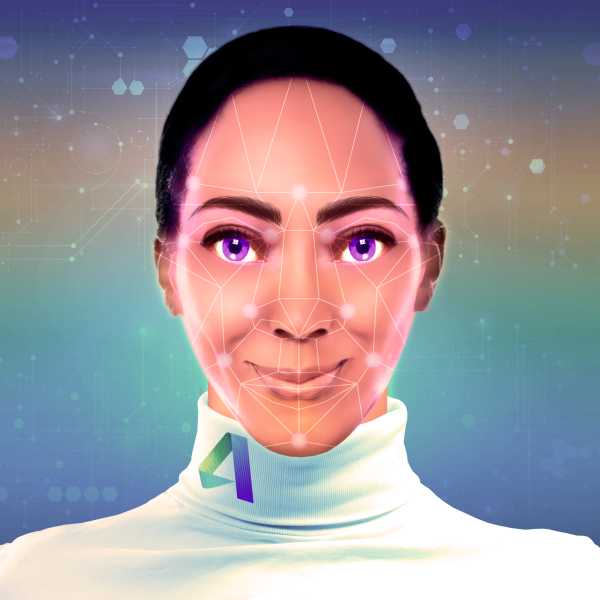Watch all the Transform 2020 sessions on-demand here.
As Google’s Duplex made clear a week ago, the uncanny valley can have consequences. That was true before AI, and it’s a notion tested on a regular basis now that intelligent machines have entered the mix.
In the same week that Duplex made its world premiere, Autodesk began to roll out its avatar and AI-powered assistant Ava, which traverses uncanny valley as well.
Ava appears on portions of the Autodesk website and will later be placed in Autodesk software. The avatar looks remarkably lifelike and will continue to evolve, Autodesk director of machine assistance Rachael Rekart told VentureBeat in an interview at Autodesk offices in San Francisco.
In the coming weeks, the assistant will even be able to analyze facial expressions and analyze voices to detect emotions like joy, sadness, and frustration. Real-time knowledge of a person’s emotional state will allow Ava to share an emotional reaction on her face in return.
June 5th: The AI Audit in NYC
Join us next week in NYC to engage with top executive leaders, delving into strategies for auditing AI models to ensure fairness, optimal performance, and ethical compliance across diverse organizations. Secure your attendance for this exclusive invite-only event.
Look away or stop paying attention and Ava will notice and ask if you want to pause your conversation.
https://youtu.be/mKZ84O1666g
The Ava avatar was made by Soul Machines, a New Zealand company that believes in making digital people and raising them like a child. Before making Ava, Soul Machines CEO Mark Sagar won an Academy Award for animating characters for movies like Avatar, King Kong, and Spider-Man 2.
In an interview with VentureBeat last year, Sagar said roughly 20 percent of people he introduces his baby avatar to at conferences are creeped out, but his purpose is to create deep, personal connections that cannot be achieved by cartoon character, company mascot, or brand logo.
“The brain reacts differently to something it perceives to be alive versus something which it perceives to be inanimate,” he said. “If you ever see a realistic eye looking at you, you’re much more likely to respond than if you see a cartoon eye looking at you.”
Rekart says the Ava avatar hasn’t received much user backlash yet, perhaps due to the fact that a number of steps were taken to disrupt the uncanny valley feeling. Like Duplex, Ava begins by telling people, “I am a virtual assistant.”
“We get a lot of mixed feedback on purple eyes, but that’s an intentional move so that we are making her right out the gate not human,” she said. “I honestly think this is really about being transparent, is the only way to do this. The uncanny valley is all about feeling tricked and uneasy because it almost looks too real. If you are being transparent with your customers that ‘Hey, I’m not real, no matter how real I look’ — that’s the way that we’ve decided to approach it.”

Above: The original version of Ava created prior to Soul Machines’ involvement in the project.
From her New Zealand accent to her blazer jacket, Ava was made with her depicted race, ethnicity, and business attitudes in mind.
“We put a lot of work into her overall image and voice, and the intention behind it is for her to be ethnically ambiguous,” she said. “She’s supposed to represent a multicultural company, because Autodesk is multicultural, so we did things like slant her eyes more to represent more of an Asian culture and made her lips bigger to represent more of an African culture.”
Ava’s conversational AI was made by a team of 13 that includes many recent college graduates with backgrounds in creative writing, UX design, and computer science.
The team began with the Ava chatbot. Preceding the avatar, Ava’s AI for text or voice conversations was trained with things like knowledge from company forums and conversations with customers in emails over the years. Ava now carries out 100,000 customer conversations a month. Over the course of the next year, Autodesk intends to test the Ava avatar in new settings, like voice control for automated workflows and helping people navigate complicated tasks.
The choice was made to put so much work into Ava because it’s the future, Rekart said.
“We decided to make this expansion because it’s really just where we see the evolution of chatbots and digital assistants in the customer support space going,” Rekart said. “The only way to get through uncanny valley is to go through it.”


